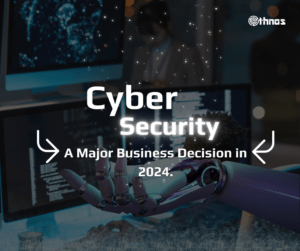It’s the final day of the international fraud awareness week! and the team at Ethnos has prepared something special for you.
As we mark the international fraud awareness week, it is very important to understand the nature of the threat and the shared responsibility we all have in mitigating the risks as members of the ecosystem.
In this article, we’ll delve into some common tactics employed by cybercriminals and provide practical strategies for safeguarding your personal information.
- Social Engineering:
Cybercriminals often exploit human psychology through social engineering tactics. This can involve manipulating individuals into divulging confidential information or performing actions that compromise security.
We have seen people experience financial loss after participating in unsuspecting social media challenges that include posting sensitive information like date of birth, mother’s maiden name, bank cards and many more. - Phishing Attacks:
One of the oldest yet still effective tricks in the cybercriminal playbook, phishing involves fraudulent attempts to obtain sensitive information by posing as a trustworthy entity. This can be done through SMS, emails or social media links.
To prevent phishing attacks, it is important to verify source of links before clicking, also look out for grammatical errors in content you receive. - Ransomware attacks:
Ransomware is a malicious software that encrypts a user’s files, rendering them inaccessible until a ransom is paid. Cybercriminals use various delivery methods, such as email attachments or infected websites, to deploy ransomware.
This tactic not only denies access to crucial data but also coerces victims into paying to regain control.
Ethnos head of Service delivery, Goodness Okpani made a comprehensive presentation on fileless malware attacks, watch here.
- Man-in-the-Middle (MitM) Attacks:
MitM attacks involve intercepting communication between two parties, allowing cybercriminals to eavesdrop on sensitive information. This can occur in various scenarios, such as public Wi-Fi networks, where attackers position themselves between the user and the intended destination. We often advise that people avoid using public wifi, most especially ones without passwords to avoid MITM attacks.
- Identity Theft:
Cybercriminals engage in identity theft to impersonate individuals for financial gain or other malicious purposes. They often acquire personal information through data breaches, phishing, or social engineering, using stolen identities to open fraudulent accounts, apply for credit, or commit other forms of financial fraud.
We advise that you engage in thorough background checks on strangers you meet online before you engage them financially or for other reasons.
As cybercriminals continually refine their tactics, understanding the methods they employ is crucial for individuals and organizations alike. By staying informed, practicing vigilance, and implementing robust cybersecurity measures, we can collectively fortify our defenses against these common tactics and mitigate the risk of falling victim to cyber fraud.
At Ethnos, we organize security awareness training for organizations and individuals. Reach out to us to learn more.
Stay safe, stay secure!



